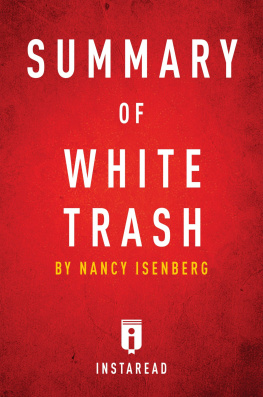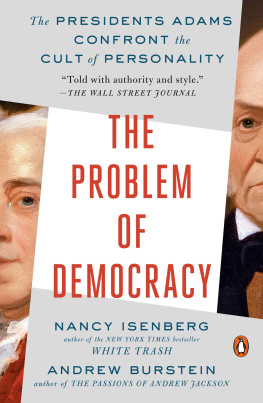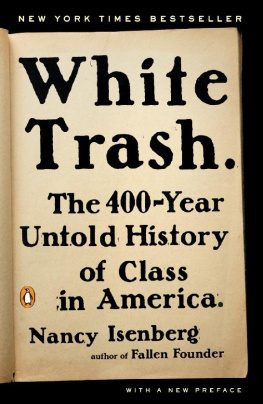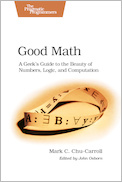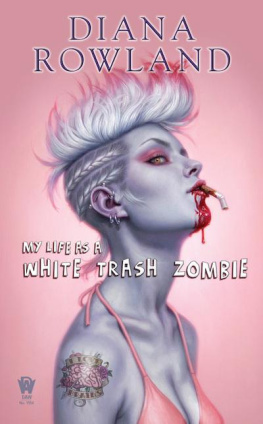Nancy Isenberg - Summary of White Trash
Here you can read online Nancy Isenberg - Summary of White Trash full text of the book (entire story) in english for free. Download pdf and epub, get meaning, cover and reviews about this ebook. year: 2016, publisher: IRB, genre: Politics. Description of the work, (preface) as well as reviews are available. Best literature library LitArk.com created for fans of good reading and offers a wide selection of genres:
Romance novel
Science fiction
Adventure
Detective
Science
History
Home and family
Prose
Art
Politics
Computer
Non-fiction
Religion
Business
Children
Humor
Choose a favorite category and find really read worthwhile books. Enjoy immersion in the world of imagination, feel the emotions of the characters or learn something new for yourself, make an fascinating discovery.
- Book:Summary of White Trash
- Author:
- Publisher:IRB
- Genre:
- Year:2016
- Rating:3 / 5
- Favourites:Add to favourites
- Your mark:
- 60
- 1
- 2
- 3
- 4
- 5
Summary of White Trash: summary, description and annotation
We offer to read an annotation, description, summary or preface (depends on what the author of the book "Summary of White Trash" wrote himself). If you haven't found the necessary information about the book — write in the comments, we will try to find it.
Summary of White Trash — read online for free the complete book (whole text) full work
Below is the text of the book, divided by pages. System saving the place of the last page read, allows you to conveniently read the book "Summary of White Trash" online for free, without having to search again every time where you left off. Put a bookmark, and you can go to the page where you finished reading at any time.
Font size:
Interval:
Bookmark:
Summary of
White Trash
The 400-Year Untold History of Class in America
by Nancy Isenberg

Instaread
.jpeg)
Please Note
This is a summary with analysis.
Copyright 2016 by Instaread. All rights reserved worldwide. No part of this publication may be reproduced or transmitted in any form without the prior written consent of the publisher.
Limit of Liability/Disclaimer of Warranty: The publisher and author make no representations or warranties with respect to the accuracy or completeness of these contents and disclaim all warranties such as warranties of fitness for a particular purpose. The author or publisher is not liable for any damages whatsoever. The fact that an individual or organization is referred to in this document as a citation or source of information does not imply that the author or publisher endorses the information that the individual or organization provided. This concise summary is unofficial and is not authorized, approved, licensed, or endorsed by the original books author or publisher.
Table of Contents
White Trash by historian Nancy Isenberg is a riveting chronicle of class in America as explored through the role and the plight of the white underclass from the days of colonial settlers to the present.
Despite the founders declaration that all men are created equal, the reality of life in America has continuously told a different story. With careful research, Isenberg reviews the popular American myth of equality for all and illustrates how poor whites, or white trash, have traditionally been a much-derided, marginalized part of American society.
Class hierarchy traces back to Americas earliest history. Contrary to the myth that American colonial settlers were either enterprising businessmen or devout Christians fleeing religious persecution, the majority were actually economically challenged outcasts or social burdens that the English were happy to be rid of. Many were criminals, vagrants, and orphans who then became indentured servants with no landowning rights. Thus, from the nations beginnings as a colonial society, there arose a firmly entrenched social order in which landowners, politicians, and other well-bred families occupied a higher station than servants who had no land and therefore no power.
Throughout this 400-year history, the circumstances of poor whites have changed, but the overall disdain and prejudice against this sector of society has not. Despite gains made by Franklin Delano Roosevelts New Deal and other governmental efforts to aid the poor, many middle- and upper-class Americans are still contemptuous of this population, which is seen as a base stratum of civic life. Public figures from meager beginnings, such as Elvis Presley and President Bill Clinton, may have achieved high degrees of success and wealth, but the stigma of what it means to be white trash in America remains strong.
Nancy Isenberg is a history professor at Louisiana State University. She is the author of Sex and Citizenship in Antebellum America (1998), Fallen Founder: The Life of Aaron Burr (2007), and Madison and Jefferson (2010), a New York Times bestseller.
Thomas Paine (1736-1809) was an American philosopher and the author of Common Sense (1776).
Jefferson Davis (1808-1889) was president of the Confederate States of America (1862-1865). He didnt believe that whites could live in harmony with former slaves.
Richard Hakluyt (1552-1616) was an English clergyman and geographer who chronicled the lives of explorers. In 1589, he published Principal Navigations, a comprehensive compilation of all the narratives he could find of English explorations to the north, the east, and the Americas.
Georges-Louis Leclerc, Comte de Buffon (1707-1788) was a French naturalist who wrote about America as a wasteland of degeneracy.
Jimmy Carter was the 39th president of the United States. His campaign is notable because of its conscious effort to appeal to lower-class whites.
John Adams (1735-1826) was the second president of the United States. He accepted class distinctions as outlined in a series of letters he wrote to Thomas Jefferson.
Abraham Lincoln (1809-1865) was the 16th president of the United States. He had roots in the white underclass and his adversaries dubbed him president of the mudsills.
Benjamin Franklin (1705-1790) was an American inventor, author, and politician. He was concerned with how to best create a productive society and believed that class conflicts would dissipate on their own.
Thomas Jefferson (1743-1826) was the third president of the United States. He believed in a hierarchical, agrarian society.
Davy Crockett (1786-1836) was an early American folk hero. He helped expose class discord in the backcountry.
Sarah Palin was the Republican nominee for vice president in 2008. She appealed to poor white voters, and her white trash persona was heavily scrutinized in the media.
Bill Clinton was the 42nd president of the United States. He grew up poor in rural Arkansas and had a common man appeal, like Andrew Jackson and Jimmy Carter before him.
Tammy Faye Bakker (1942-2007) was an American televangelist who, along with her husband James Bakker, was brought down by scandal. Her subsequent appearances on reality television resonated with audiences, presumably because she represented the more unseemly stereotypes of the white underclass.
- The ideology of the American dream leads many middle-class Americans to assume that only immigrants and racial and ethnic minorities are poor in America.
- The middle class is sheltered from the realities faced by the working and poor classes.
- Some American colonial thinkers believed that class conflicts would work themselves out and therefore rarely mentioned problems with class divisions.
- Racial difference is exploited to make poor whites feel superior.
- The class system in America is tied to its earliest laws surrounding land use.
- Accepted terms used to define white trash have been numerous, scathing, and dehumanizing.
- The poor white class is alleged to be identified by certain physical characteristics that indicate a lower breed of person.
- Certain politicians have presented a common man image to which lower-class white voters respond positively.
- The eugenics movement popularized the idea of sterilizing lower classes.
- Demeaning depictions of poor whites in popular culture perpetuate widespread bias against this underclass.
- Government interventions to overcome prejudice and support poor whites have been historically met with backlash.

We hope you are enjoying this Instaread ebook
Download the Instaread mobile app to get unlimited text & audio summaries of bestselling books.
CLICK HERE TO LEARN MORE
The ideology of the American dream leads many middle-class Americans to assume that only immigrants and racial and ethnic minorities are poor in America.
Analysis
Many Americans buy into the ideology that the United States is the land of promise and opportunity, where citizens can be free from the confines of a hierarchical society. In simplistic, optimistic history books, the United States is depicted as a haven for diligent, ambitious people who can achieve wealth and status without constraints on their liberties. Yet the reality is that firmly entrenched class barriers impede upward mobility. These barriers have been intentionally reinforced by the ruling class since the nations inception.
Next pageFont size:
Interval:
Bookmark:
Similar books «Summary of White Trash»
Look at similar books to Summary of White Trash. We have selected literature similar in name and meaning in the hope of providing readers with more options to find new, interesting, not yet read works.
Discussion, reviews of the book Summary of White Trash and just readers' own opinions. Leave your comments, write what you think about the work, its meaning or the main characters. Specify what exactly you liked and what you didn't like, and why you think so.

